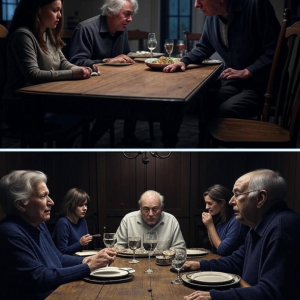In the compelling narrative of Madison Reynolds, a successful real estate investor and fiercely loyal sister, themes of familial loyalty, ownership, deception, and personal boundaries converge in a way that is both dramatic and deeply relatable. What begins as an act of compassion for a grieving brother turns into a test of dignity and control when Madison finds herself at odds with his new wife, Allison—a woman unaware that the very house she claims as her own belongs not to her husband, but to his sister.
At the core of this story is Madison’s generosity. After the sudden death of their parents, she inherits the family home and rental properties, while her brother Ryan receives financial assets. When Ryan spirals into depression and loses his job and relationship, Madison steps in to help—not with lectures or conditions, but with a quiet, selfless offer: move into the family home, rent-free, and take the time needed to recover. Her decision is rooted in compassion and a deep sense of sibling duty, echoing the tight bond they shared throughout a turbulent, nomadic childhood.
For nearly two years, the arrangement works. Ryan begins to heal, rebuilds his professional life through freelancing, and reconnects with Madison during their weekly Sunday dinners. This sense of stability is abruptly disrupted when Allison enters the picture. What first appears as a hopeful chapter in Ryan’s life gradually reveals itself as a cautionary tale about manipulation and appearances.
Allison is introduced as a widow with a tragic past, but her behavior quickly raises red flags. Her whirlwind courtship and rushed marriage to Ryan might be forgivable on emotional grounds, but her controlling tendencies, calculated charm, and quick dismissal of Madison’s role in the household paint a more sinister picture. Her redecoration of the family home—removing heirlooms and sentimental items without discussion—symbolizes not just a desire for change, but an erasure of history and identity. She isn’t merely making space for a new life; she’s rewriting the narrative.
The most striking conflict arises from Allison’s ignorance—and Ryan’s silence—about who actually owns the house. She believes the property belongs to her husband and discusses renovations and financial planning with no idea that Madison holds the deed. This deception, while initially passive, is quietly corrosive. Ryan’s decision not to correct her, motivated by insecurity and fear of losing someone he believes loves him for his stability, becomes a betrayal of Madison’s trust.
Madison’s internal struggle—between loyalty to her brother and her right to the truth—is where the story finds its emotional weight. She chooses, at first, to stay silent out of love, sacrificing her own comfort to protect Ryan’s fragile relationship. However, Allison’s increasing hostility and disrespect toward her crosses a boundary. When Allison, unaware of Madison’s ownership, tells her to “get out” of the house, the confrontation that follows is not only cathartic but just. Madison’s laughter and presentation of the deed is not cruel—it is a moment of reclaiming dignity, authority, and truth.
This story ultimately highlights how silence in the face of lies—no matter how well-intentioned—can lead to larger betrayals. Madison’s journey is not just about property ownership; it is about asserting boundaries, reclaiming respect, and holding others accountable. She embodies the importance of balancing compassion with clarity, reminding us that family support does not mean erasing oneself or tolerating falsehoods.
In a world where appearances often carry more weight than authenticity, Madison’s refusal to be diminished in her own home is a powerful lesson. It’s a story not just about real estate, but about emotional equity—the right to stand tall in spaces you’ve built, and the courage to demand truth where it’s been replaced by illusion.





